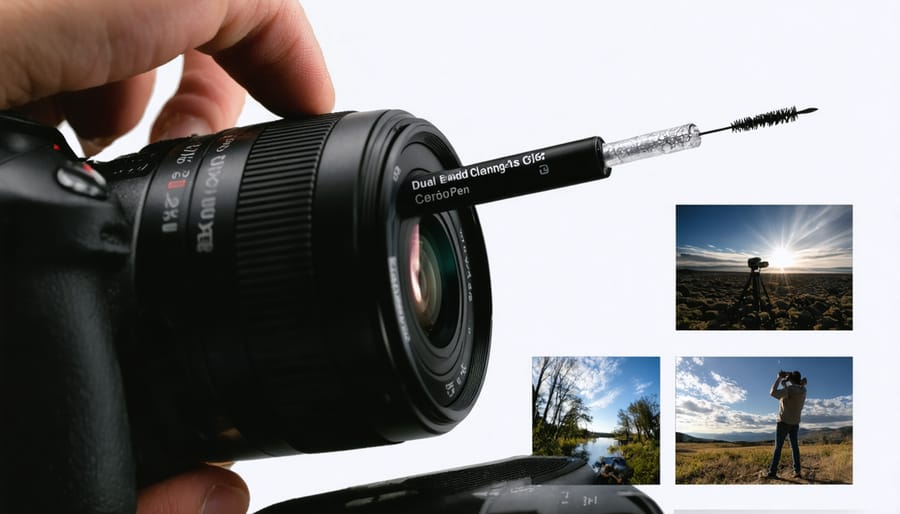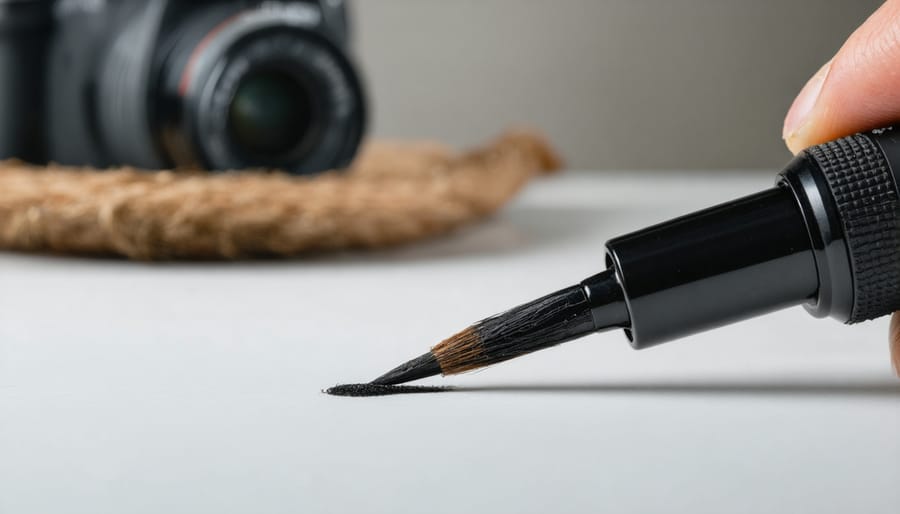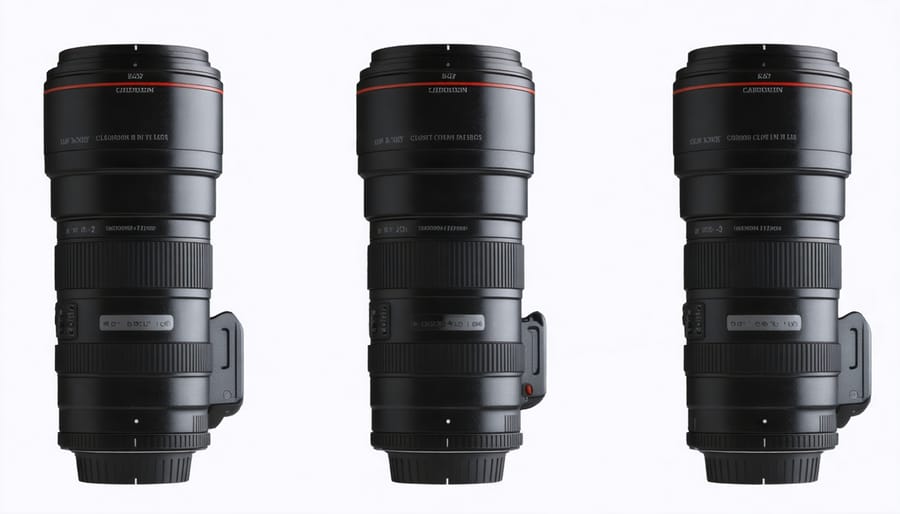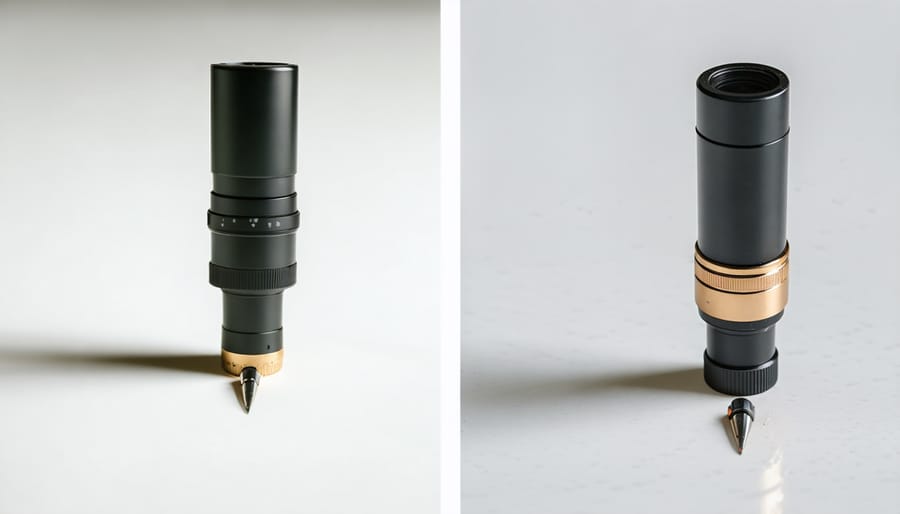
Safeguard your precious camera gear with a lens cleaning pen – the photographer’s secret weapon against fingerprints, dust, and smudges. Unlike traditional cleaning cloths, these precision-engineered tools combine a retractable brush and carbon-based cleaning tip to deliver professional-grade results without harsh chemicals or abrasives. Whether you’re shooting in dusty landscapes or controlled studio environments, mastering expert-level lens cleaning techniques starts with understanding this essential tool. From delicate smartphone lenses to premium DSLR glass, a quality lens pen offers the perfect balance of effectiveness and convenience, ensuring crystal-clear shots every time. Its compact size and dual-ended design make it an indispensable addition to any camera bag, ready to tackle unexpected cleaning challenges during critical shooting moments.
What Makes a Lens Cleaning Pen Special?
The Two-Ended Design
A lens cleaning pen’s dual-ended design makes it a versatile tool for maintaining pristine optics. On one end, you’ll find a soft, retractable brush that effectively sweeps away loose particles like dust and debris. This brush is typically made from fine, anti-static fibers that won’t scratch your valuable glass surfaces while preventing static buildup that could attract more dust.
The opposite end features a unique carbon-charged tip, often covered with a specialized cleaning pad. This tip works by using invisible carbon compound to attract and absorb oils, fingerprints, and smudges from your lens surface. The carbon compound is self-replenishing – each time you replace the cap, it recharges the cleaning tip, ensuring consistent performance over many uses.
What makes this design particularly clever is how each end complements the other: first sweep away particles with the brush, then follow up with the carbon tip for a thorough clean, all in one convenient tool.

How Carbon Technology Works
The carbon technology in lens cleaning pens works through a unique compound of microscopic carbon particles that act like thousands of tiny magnets for dust and oils. When you brush the carbon tip across your lens, these particles create a gentle static charge that attracts and lifts away contaminants without scratching the delicate glass surface. Unlike liquid cleaners or clothes that can leave residue behind, carbon particles naturally dissipate after use.
What makes this technology particularly effective is its self-replenishing nature. Each time you retract and extend the brush, the carbon compound is refreshed by rotating through an internal chamber, presenting a clean surface for the next use. This process ensures that you’re always cleaning with fresh carbon particles rather than redistributing old debris across your lens.
The carbon compound is specifically engineered to be soft enough to prevent scratches while maintaining enough texture to effectively remove fingerprints, smudges, and dust. This careful balance makes it safe for use on all types of camera lenses, including those with special coatings.
Using Your Lens Cleaning Pen Correctly
Pre-Cleaning Inspection
Before using your lens cleaning pen, carefully inspect your lens to assess its condition and determine the appropriate cleaning approach. Hold your lens at an angle under good lighting to identify any dust, smudges, or more stubborn debris. Pay particular attention to the center of the lens where most light passes through. If you notice any scratches or significant damage, consider consulting professional cleaning systems instead. Gently rotate the lens to catch light reflections, which can reveal fingerprints or oil spots that might need special attention. Remember that not all specs require cleaning – sometimes tiny dust particles on the front element won’t affect your images, and unnecessary cleaning might risk introducing scratches.
Brush Stage
Begin by holding the lens cleaning pen with the brush side facing down at a 45-degree angle to your lens surface. Before making contact, gently tap the brush against your hand to remove any loose particles that might have settled in the bristles. This simple step prevents transferring debris onto your lens.
Using light, sweeping motions, work from the center of the lens outward in a spiral pattern. The soft, retractable brush bristles are specifically designed to lift dust and loose particles without scratching your valuable glass. Never apply pressure – let the brush do the work with its own weight.
For stubborn particles, avoid the temptation to press harder. Instead, make multiple gentle passes over the same area. Pay special attention to the edges and corners where dust tends to accumulate. Between cleaning sessions, always retract the brush to protect its bristles from contamination and maintain its effectiveness.
Remember to occasionally clean the brush itself by gently blowing on it or using a rocket blower, ensuring it’s ready for your next cleaning session. This maintains the brush’s effectiveness and prevents cross-contamination between cleanings.
Carbon Tip Stage
When dealing with stubborn marks or smudges on your lens, the carbon tip stage requires a precise technique for optimal results. Start by gently tapping the carbon tip against a clean surface to remove any loose particles. Hold the pen at a 45-degree angle and apply light pressure while making small circular motions over the affected area. Never drag the carbon tip straight across the lens surface, as this can potentially cause scratches.
For particularly resistant marks, you may need to make several passes, but always maintain gentle pressure. The carbon compound works by attracting and lifting oils and fingerprints from the glass surface. If you notice the cleaning effectiveness diminishing, rotate the carbon tip slightly to expose a fresh cleaning surface.
Remember to clean only the areas that need attention – unnecessary cleaning can increase the risk of accidental scratches. After using the carbon tip, inspect the lens under good lighting to ensure all marks have been removed. If any residue remains, a final light pass should do the trick. Always cap the pen immediately after use to prevent contamination of the carbon tip.

When (and When Not) to Use a Lens Pen
A lens pen is an invaluable tool in your camera maintenance tips arsenal, but knowing when to use it – and when to reach for something else – is crucial for optimal lens care.
Ideal scenarios for using a lens pen include:
– Quick touch-ups in the field when you spot fingerprints or dust
– Removing smudges from your viewfinder or LCD screen
– Cleaning filters between shots
– Regular maintenance of your everyday lenses
– Addressing light dust accumulation on lens surfaces
However, there are situations where a lens pen isn’t your best option. Skip the lens pen when:
– Dealing with wet substances or water droplets (use a microfiber cloth instead)
– Cleaning heavily soiled lenses (start with a proper liquid lens cleaner)
– Working with scratched or damaged lens surfaces (seek professional repair)
– Addressing fungus or internal lens elements (requires professional service)
– Cleaning sensor surfaces (use dedicated sensor cleaning tools)
Think of a lens pen as your quick-response cleaning tool – perfect for maintaining already-clean lenses and addressing minor issues. It’s like having a spot-cleaning brush for your clothes; great for small marks but not suitable for deep cleaning.
For best results, incorporate your lens pen into a comprehensive cleaning routine. Use it after checking the lens surface for loose particles and gently removing them with a blower. This prevents scratching by ensuring you’re not dragging particles across the glass.
Remember that while lens pens are convenient, they’re not a replacement for a complete lens cleaning kit. Keep alternative cleaning tools handy, especially when shooting in challenging conditions where your gear might need more thorough attention.

Maintaining Your Lens Cleaning Pen
Proper maintenance of your lens cleaning pen is crucial for ensuring its longevity and effectiveness. Store your cleaning pen in its protective case or cap when not in use to prevent dust and debris from contaminating the cleaning elements. Keep it in a cool, dry place away from direct sunlight, as extreme temperatures can affect the carbon compound’s effectiveness.
Before each use, gently tap the carbon tip on a clean surface to remove any loose particles that might have accumulated. This prevents these particles from transferring onto your lens during cleaning. Avoid touching the carbon tip with your fingers, as oils from your skin can compromise its cleaning ability.
Monitor the performance of your cleaning pen regularly. If you notice that it’s leaving streaks, not effectively removing smudges, or the carbon tip appears worn or damaged, it’s time for a replacement. Most lens cleaning pens remain effective for about 300-500 uses, though this varies depending on frequency of use and storage conditions.
The retractable brush component should be checked periodically for loose bristles. If you find any, it’s best to replace the pen rather than risk scratching your valuable lenses. Similarly, if the carbon tip becomes hard or starts crumbling, these are clear signs that the pen has reached the end of its useful life.
Remember that while lens cleaning pens are cost-effective tools, they’re not meant to last forever. Regular replacement ensures you’re always using an effective cleaning tool that won’t compromise your expensive photography equipment.
A lens cleaning pen is an indispensable tool in every photographer’s kit, offering a safe and effective way to maintain crystal-clear optics. Throughout this guide, we’ve explored how these compact tools combine convenience with precision, featuring specialized tips and cleaning compounds that protect your valuable glass while removing stubborn smudges and debris.
Remember that successful lens cleaning relies not just on having the right tool, but using it correctly. Always start with the brush end to remove loose particles, then follow with gentle circular motions using the cleaning tip. Never apply excessive pressure, and always store your cleaning pen with its cap secured to maintain its effectiveness.
Regular maintenance of your camera gear, including proper lens cleaning, directly impacts the quality of your images and the longevity of your equipment. By incorporating a lens cleaning pen into your photography routine and following proper technique, you’ll ensure optimal performance from your lenses while protecting your investment.
Whether you’re a professional photographer or an enthusiastic hobbyist, making lens care a priority will help you capture the sharp, clear images you envision, shot after shot.





















